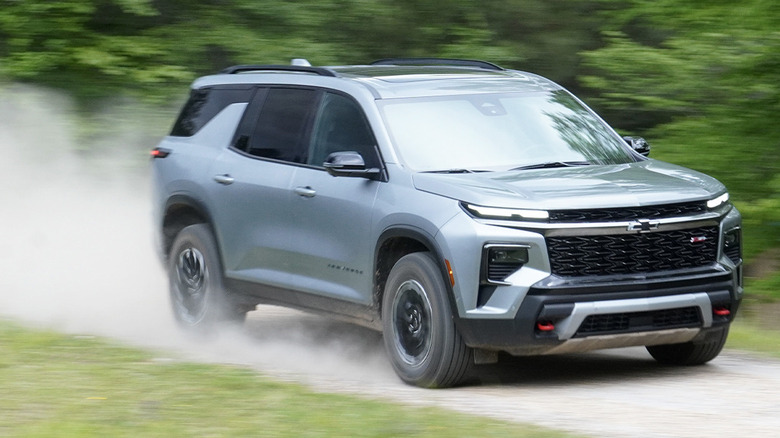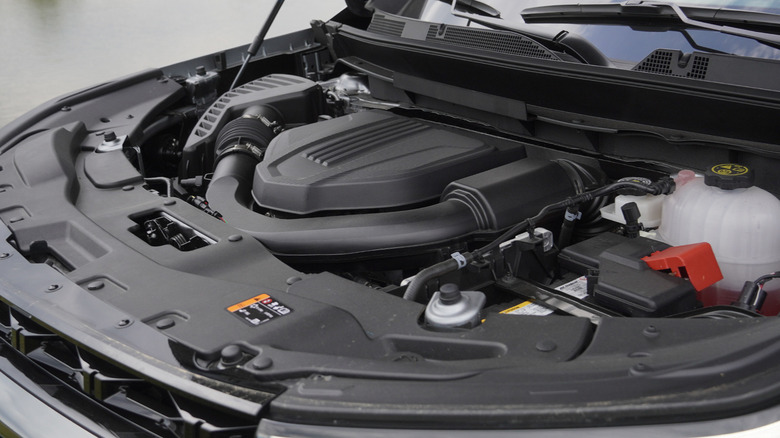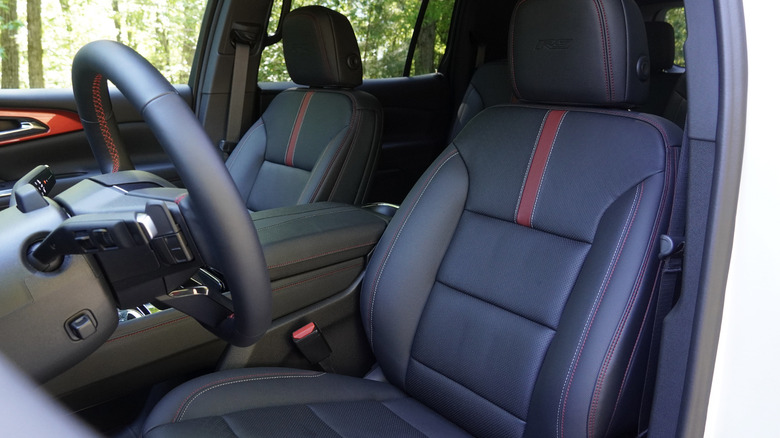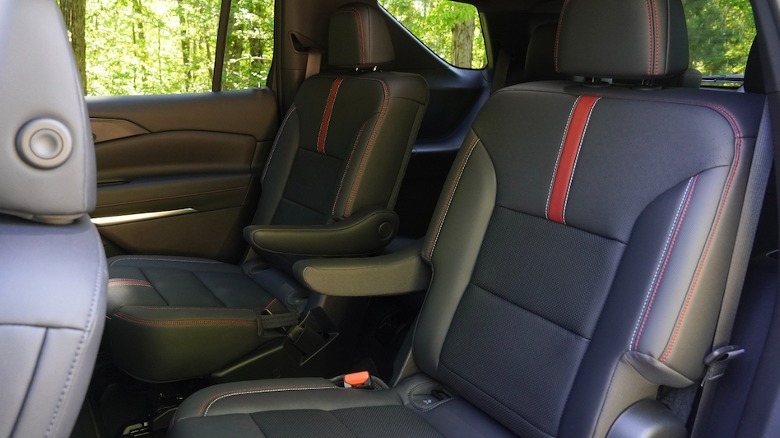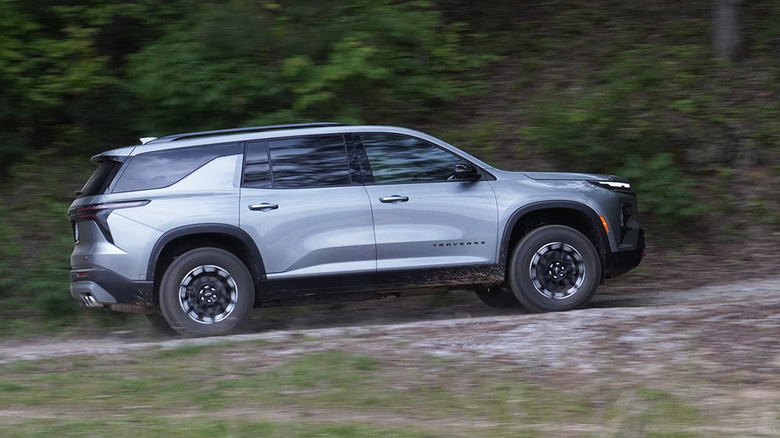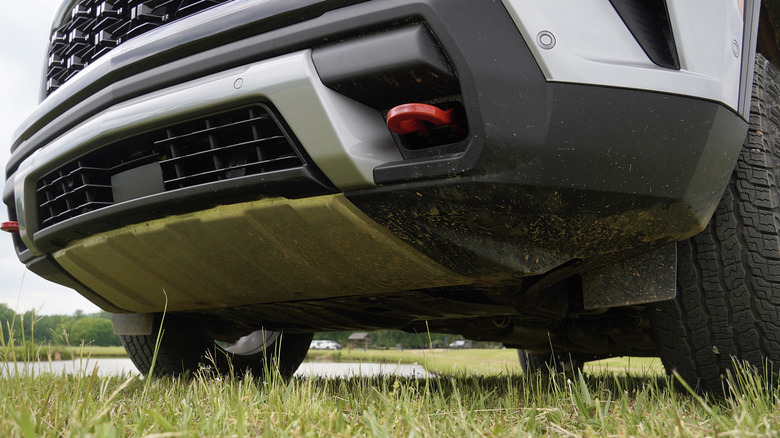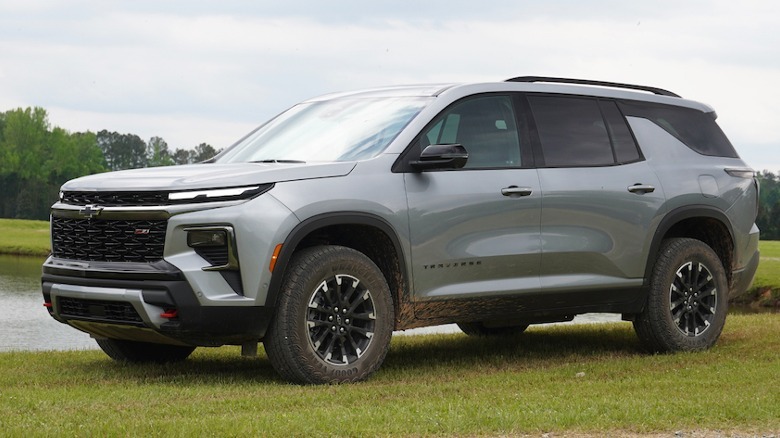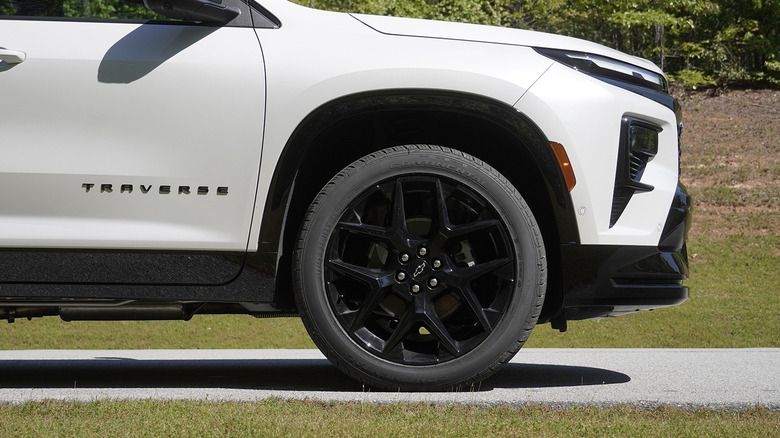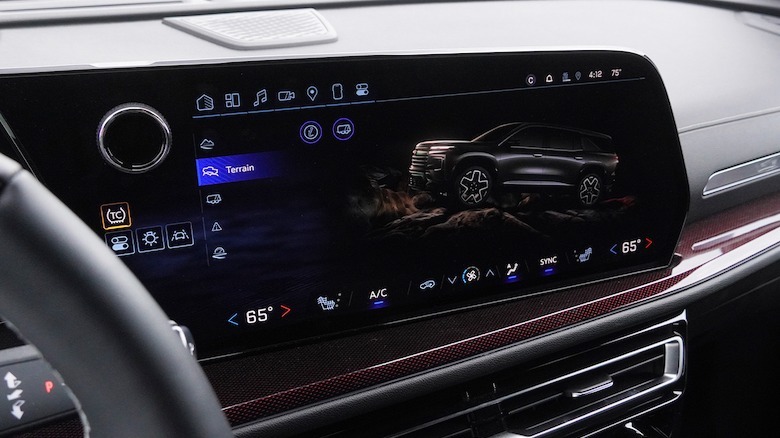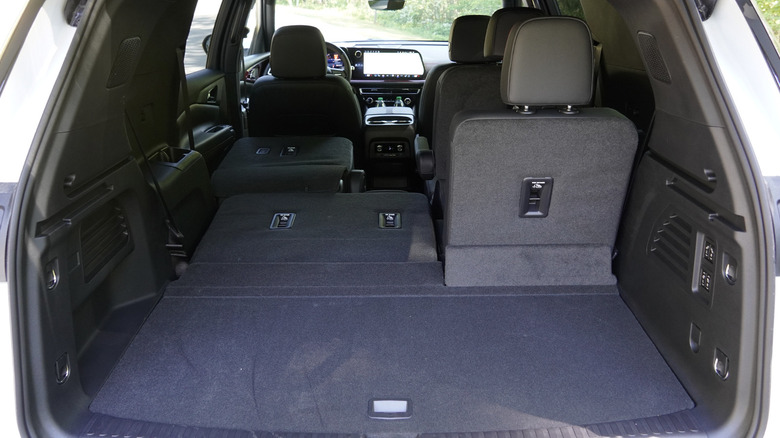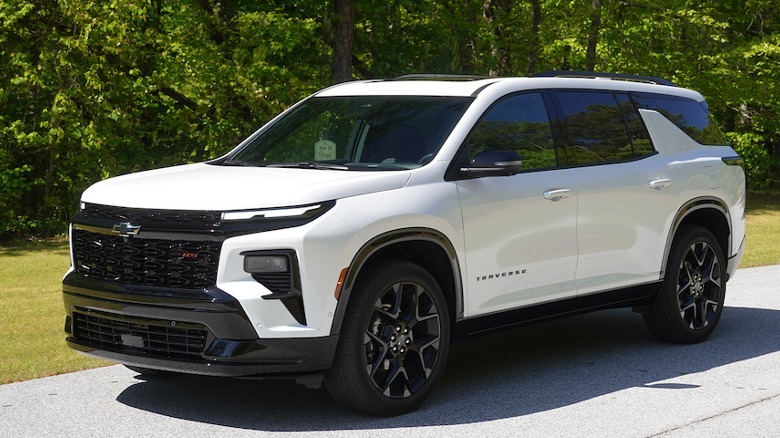2024 Chevrolet Traverse First Drive: Three-Row SUV Creeps Closer To A Mini Tahoe
For model year 2024, the Chevrolet Traverse enters a third generation that abandons the bulky, bulbous designs of the previous iterations and seemingly taking one step closer to becoming a miniature 2025 Tahoe. Chevy clearly hopes that customers on the cusp of purchasing a full-size SUV might now take a second glance at the spec sheet of the Traverse, which offers the driving comfort of independent rear suspension and the space of three rows in a more compact unibody crossover platform.
To help the Traverse abandon the impression that the previous gen prioritized the Buick Enclave and then badge-engineered its GMC and Chevrolet variants, the new Traverse also receives a new off-roady Z71 trim and a revamp for the sporting RS package. Fittingly, Chevy shipped me out onto the winding country two-lane roads, plus a couple of stints in the woods, southwest of Atlanta to experience everything the new Traverse has to offer.
A new powertrain for the new generation
The shared Traverse, Enclave, and Acadia will all debut a new 2.5-liter turbocharged inline-four engine for the next generation, which GM developed specifically for this platform. Before I got any seat time, three of the engineers who worked on the Traverse helped me nerd out on some of the details of the powerplant, which shares the same bottom-end design as the 2.7-liter unit we know well from the Colorado and Canyon pickup trucks.
As expected, thanks to forced induction, the 2.5L turbo puts out more low-end torque and high-end horsepower than the outgoing V6. That tractability across the rev range comes across as almost more important than peaks of 328 horsepower and 326 lb-ft of torque. Nifty details to help the engine live up to modern performance, reliability, and emissions requirements include an electric phaser for the intake valve camshaft, which allows the cam timing to advance up to 100 degrees—helping during cold starts and to improve the smoothness of auto stop-start functions.
Little details on the bigger 2024 Traverse
The more typical thermostat has been replaced by a coolant control valve system, which helps the coolant, engine oil, and transmission fluid heat up more efficiently. A twin-scroll turbo further helps to improve boost build-up at any RPM, critical for the petite powerplant's application in a relatively large, boxy family hauler. Yet the new Traverse actually measures almost exactly the same in length and height as before, with a moderate one-inch increase in width. The turbo-four allows for better packaging, however, so the passenger compartment definitely feels quite roomy despite cramming in three rows.
With the driver's seat adjusted to fit my 6'1" long-limbed frame, I then performed the standard journalistic experiment and hopped in the second row. I fit just fine, though the third row then becomes a joke. By scooting both the driver's seat and second-row bucket forward a bit, however, I just barely felt almost comfortable in the furthest back bench. But I can't recommend adults do so on a long road trip, to say the least.
Testing the Z71, a semi-proficient soft-roader
My first driving impressions of the new Traverse came off-road, rather than on asphalt as most buying customers might experience. Chevy set up a quick loop through the woods and fields of the pastoral South, then plopped me into the new Z71 trim, the common Chevy trim now added to the Traverse lineup for the first time ever. Some might call the Traverse Z71 a "soft-roader" and they wouldn't be wrong about this unibody, independent-suspension crossover. But GM knows this segment, and didn't skimp on the important details that enable light adventures.
Most importantly, the Z71 employs 18-inch wheels shod in smallish 32-inch Goodyear Wrangler Territory AT tires that measure 265 millimeters wide. A set of nifty shock dampers from ZF house an internal hydraulic rebound chamber to improve cushion at the long end of suspension travel, and a trick all-wheel-drive system includes a twin-clutch rear diff for optimized torque distribution between the rear wheels.
Just enough goodies for some fun
The Georgia countryside we traversed (sorry) included zero rock crawling or whoops, but the pace and smoothness of the Z71 across rutted, washboardy field roads and some gravel two-track impressed me nonetheless. The turbo-four hummed along as I switched between Off-Road and Terrain driving modes, the latter exclusive on the Traverse to the Z71 package.
Both modes tell the transmission to wait longer before shifting, while allowing for more wheelslip and yaw angle before traction control intervenes. A widget on the main touchscreen even allowed me to switch off traction and electronic stability control entirely in Off-Road. Terrain mode, meanwhile, adds a Hill Descent Control program that works just okay via engine and traditional braking pulses, with no speed selection possible.
I eventually built up the courage to push a bit harder than I expected the Traverse to enjoy, but the suspension just gobbled up bumps without much clunking, and a bit of tail-happy fun thrown in for good measure, too. Such shenanigans aren't really the point, though. Instead, Chevy hopes that families can use the Traverse for mild car camping or to hit dirt roads on the way to trailheads. Minor obstables may test the aluminum front and steel underbelly skid plates, but anything more difficult may require use of the red Z71 tow hooks. We're a long way from the spectacular Multimatics and overall capability of the ZR2 Colorados, but the Traverse definitely does better off-road than I, or any of my compatriots on hand, probably expected.
Top-spec RS for the city slickers
The next day, I took an RS out for on-road testing. A warm day with plenty of dry asphalt ahead meant leaving any sideways mischief in the past, but I wanted to suss out whether the RS nomenclature can come anywhere near the level of fun that the Z71 manages off-road. Immediately, I noticed that without the chatter of washboards or gravel to distract me, the turbo-four comes across as a bit less inspired. Hints of intake whoosh and turbo whine enter the cockpit, but mostly the little mill just gets the job done without ever sounding particularly happy.
Playing with paddle shifters on a commuter crossover to spin small engines up toward redline always brings a chuckle to my days, but in this instance, constantly reminded me of the unconscionable fact that GM declined to equip the Colorado ZR2 with paddle shifters. Maybe some of the similar aesthetic on the interior constantly brought other Chevy vehicles to mind—at the very least, the peculiar Acura ZDX I drove immediately before heading to Georgia (a strange mashup of GM's Ultium EV platform and a few attempts to spruce up the interior and exterior).
Sportiness comes with a cost
On road, the RS trim approaches–but never quite reaches–that desired sporty factor, in slightly less effective fashion than the Z71 approximates off-road capability. Flipping through the drive modes via buttons inconveniently placed between the steering wheel and the driver door (same exact spot and switchgear as the ZDX, in fact), I landed on Sport hoping to firm everything up. I also selected AWD via a button that allows for the choice between front and all-wheel drive, a feature I cannot ever remember seeing on any car ever before.
But even in Sport mode, the Traverse clearly displays commuter crossover tendencies. The electric power steering assist decreases, but never quite reaches any sense of precision or feedback. The suspension attempts to absorb road imperfections as best as possible, but the RS trim's 22-inch wheels clearly stress the setup. Though beefy sway bars prevent much in the way of body roll, the chassis lacks any sense of communicative character.
And yet I developed a quick sense of familiarity with the RS, which winds up as simply another eminently acceptable GM commuter car. The whole interior reinforces that impression, from the tactile materials to the roomy seats and even the texture of trim panels on the doors (unfortunately finished in an off-putting red in the RS package). I stretched out, streaming tunes through Apple CarPlay that connects so quickly on GM's Google Built-In system, and even tested the latest version of Super Cruise (which we checked out on the GMC Sierra Denali), and which now works on many of Georgia's small two-lane country roads.
Just go with the Z71
Relaxed driving sums up the Traverse on-road quite well, but does that justify the RS badging? Could a top-spec SS package up the ante? Regardless, I will obviously always prefer the Traverse in Z71 trim, if just for the taller tire sidewalls and ZF dampers. I truly believe that no car, truck, SUV, or crossover ever needs 22-inch wheels—but customers want those style points, so who are GM's frustrated chassis engineers or myself to say otherwise.
The precise buyer for a 2024 Traverse RS seems less well defined. Families who want a comfortable three-row with a bit more capability for fun days will probably spring for the Z71 in the modern era. After all, priced at $47,795 for the Z71 and a hefty $55,595 for the RS, simply factoring the style points onto a mini Tahoe without more power or at least, better handling, the math starts to end up a bit scant while glancing back at a base model at $39,495.
Waiting to see how the GMC and Buick versions turn out might come into play, too, as potential buyers take a look at the 2025 Ford Explorer and Toyota Grand Highlander as comps. Chevy hopes the Z71 might additionally entice potential conquest customers away from Jeep's Grand Cherokee, though I somehow doubt that will actually happen. Jeep people are gonna Jeep, but those few who do test drive a Z71 will likely realize that General Motors definitely found a happy recipe for a perfectly situated soft-roader in the mid-size three-row SUV segment.
